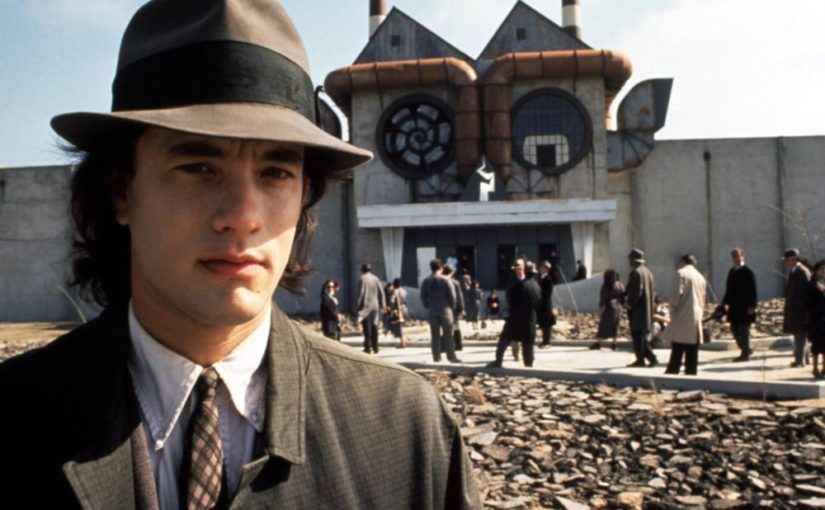Today, Americans have taken so much for granted. We look at our life and think that it is as it has always been. Indeed, it is assumed that the way things are today have always been that way. Yet, the simple and plain truth is that America has changed. Over the last few decades there has been tremendous changes at all levels of American society and culture.
For instance, it is a recent phenomenon that restaurants can charge $8 for a cup of coffee. Or, that we have to take a urine sample to get employed. Casual day on Friday, or having a “co-pay” on your medical insurance was unheard of just a few decades ago.
Let’s take a moment to reflect on our shared past. Let’s look at what it was like to work for a company in the 1960’s. Just because things have changed does not mean that they have changed for the better.
Now, of course, I am talking about “real” work. Here you work for a private business or company. I am specifically NOT talking about working for any government or state agency. They are a completely different thing altogether.
"All federal workers will be ordered to spend 75 percent of their time on government work" -President Donald Trump's (R) "cruel" executive order demanding that Federal Workers must actually work inorder to get paid. If they do not work the bare minimum, they can be fired.
Today
Mr. Waturi: But can he do the job. I know he can get the job but can he DO the job? I'm NOT arguing that with you. I'm not arguing that with YOU. I'm not ARGUING that with you. I'm not ARGUING that with you Harry! Harry... Harry... Yeah Harry... but can he DO the job. I know he can GET the job but can he do the job?
Today, finding work and going to work is quite different than what it was four decades ago.
Today, you might find a position on a “Job Board“, or through a recruiter. You might look up the company on an appraisal website or on Google. You might investigate the company and the people by going to LinkedIN. You might communicate via email and perhaps have an interview over Skype. Then, after a criminal background check, a credit check, a e-verify, and a check to make sure that you are not doxxed, you can run over and go through a drug screening.
Well…
Let me tell you how it was done in the 1960’s.
It was a much simpler process. You walked over to a company. You asked if they had an opening. You filled out an application, and maybe got an interview that day. If hired, you began work the next week.
Coffee
"I’ve never seen the soul-sucking despair of a bad job summed up better than in this scene. And as if that hellish circular conversation isn’t enough, there’s the green light, the buzzing flourescents, the coffee that can best be described as ‘lumpy’, and the coworkers, who are just as sad and defeated as Joe. Watching this, I’m reminded of all the crap jobs I’ve taken to pay my bills, which I can only assume was the point: rather than the fairytale careers of most rom-coms, JVtV was trying to dig closer to the exhaustion that lies at the heart of American capitalism. Against this despair, Joe makes only a single palliative gesture: bringing a musical lamp in as a Band-Aid to a gushing wound." -Preparing Myself for Death with Joe Versus the Volcano
One of the things that has evolved over time is how companies treated coffee in the work office.
The reader would probably be surprised to know that back in the 1960’s and the 1970’s, coffee was provided free to the employees in companies. Back then, there was typically a coffee pot in each department. This tended to be a large multi-gallon cylindrical tureen affair with two handles at the top, and a spigot at the base. There would be someone assigned to make the coffee in the morning, and it was permitted to be on all day. They staff would then simply access the coffee as needed.
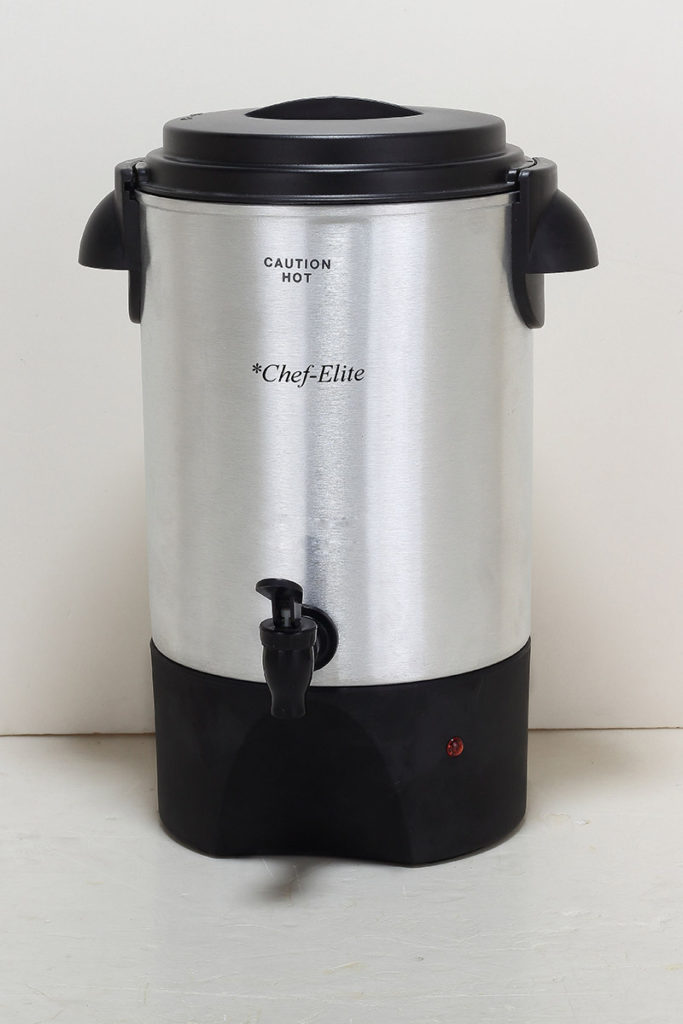
Sometime during the 1990’s, the big tureen began to be replaced in many companies.
It was replaced with a coffee “service”. This service would provide a set of burners and coffee pots. Instead of day-old thick coffee that had been brewing all day, now coffee was brewed on a as-needed basis. Each pot was good for perhaps ten cups of coffee, and thus it tended to be fresher. The only problem with this is that the “service” NOW cost more than just a can of coffee. By subscribing to a service, the company now had to pay for the coffee, the machine rental, and the bi-monthly visits by the “service”. The costs for providing coffee to the employees now tripled or quadrupled.
Companies began to pass these costs on to the employees.
Eventually, it became commonplace that the employees would have to pay for the coffee that they would consume. This was the case even if the company did not utilize a coffee “service”. So, all across the United States, from large companies to small, employees began to pay for the coffee that they would drink at work.
Joe Banks: And Frank, the coffee. It stinks. It tastes like arsenic. These lights give me a headache; if they don't give you a headache, you must be dead, so let's arrange the funeral!
Now there were different ways that this was implemented. Some companies would organize a contribution collection, others would deduct an amount out of the pay check, while still others would buy coupons to a nearby restaurant for a cup of coffee (outside of work hours of course).
This resulted in some interesting evolutionary trends in the work force. Sometimes, there would be complaints. Often a non-coffee drinker would complain. Obviously they resented having to contribute to a coffee fund when they didn’t like coffee. Thus, out of the blue, sometime in the mid-1990’s, decaffeinated coffee began to appear in corporate offices.
In the last decade there has been a small trend where certain employees would bring their own instant coffee, or beverages to work. They would keep the jars in their desk drawers and make their own beverage as they felt best. You can see these individuals mixing up their own concoctions in their cubicle, and then going to fetch some hot water to mix it up with.
To the reader, all of this doesn’t seem like a big deal. It’s “just” part of corporate life. So you mix up your own powdered coffee at your work station, what is the harm in that?
If I could teleport an office worker from 1968 to 2018, a period of fifty years, what would they have to say? Well, I can tell you what they would say. Indeed, the worker would be surprised that employees today are expected to be waitresses and waiters, in addition to their normal day to day job requirements.
The point is that coffee was once a perk freely given to employees. Today it is a characteristic measure of how poorly companies treat their employees.
The Month of Christmas
In the past, the Christmas season was important. The entire month of December was filled with events and seasonal activities. Obviously the year-end bonus, and the Christmas office party were important and noteworthy. However, there were many other events and rituals that made this month special.
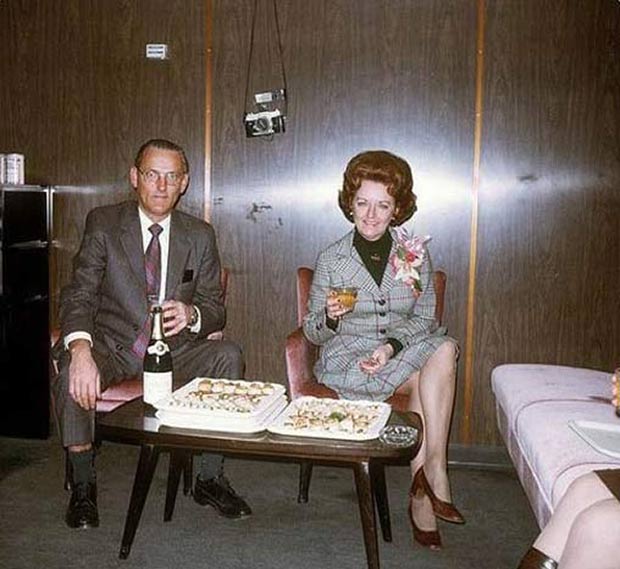
For instance there were the organized trays of snacks and soda that would be brought in by the office staff. These trays of snacks would often vary from a simple bag of chips and dip to reheated pizza rolls, and all sorts of casseroles, cakes and cookies. There was always the company Christmas tree, and the various luncheons (paid by the company) for various groups of workers. All of whom ended up quite “buzzed” and drunk by 3pm.
(BTW. Drunk workers are happy workers. Don’t believe me? Check out THIS study. LOL!)
Typically, workers would take time off from the day to go Christmas shopping. Long lunches were common during the December month, as was such things as “Secret Santa” and various house parties. I really don’t know what went wrong, but all these activities and things seemed to disappear during the 1990’s.
Personally, I attribute it to corporate greed and the completely selfish mercenary business practices of the latest crop of MBA graduates. What the Hell were they teaching in schools?
The absolute drop in company related functions for the workers hit suddenly and alarmingly. Companies not only severely curtailed Christmas activities, but they eliminated just about every other event for the employees as well. Company picnics and trips all started to be eliminated. Meanwhile the profits of the owners of these companies reached stratospheric levels.
In fact, they began to disappear during the rise of the corporate cubicle life.
I think some companies in America might still send out Christmas cards. Though, judging from the behavior of my interns, I rather doubt it. Heck, they treated saying “Merry Christmas” as if it was some kind of insult. Like calling a black person a nigger, or pulling your pants down and shitting on the carpet. I guess that is what you get when you have a radical Muslim for President for eight years.
Anyways…
Work was considered a PART, a fundamental part, of one’s life. Today it is considered a separate thing that you do. Today, in today’s corporate world, everything is considered to be separate from each other. You have a hobby that is separate from your career. You have a wife and family that are separate from your community. You have laws that are separate from your personal actions. You have a salary and money that are separate from your spiritual life. Today, everything is separate.
In the past, everything was interconnected.
This separation of everything into little pieces is a SIGN and an indicator of a serious breakup of society. It is almost like something took a huge sledgehammer and smashed up the life that Americans had. It is now broken up into many, many tiny isolated things. As such, it is divided and easy to smash into other,even smaller, pieces.
America is now at a dangerous point. Without unity, without the “glue” that holds the nations, society and our soul(s) together, we can be divided and destroyed. It is almost like there are forces that are forcefully trying to break everything apart.
It wasn’t that way before.
Previously we all had unity. Workers drank, smoked, swore and made off-color jokes to each other. We joked how fat someone was or whether or not they were “getting enough” at home. This included girls as well as guys. Hell, we did this to each other’s faces. No problem.
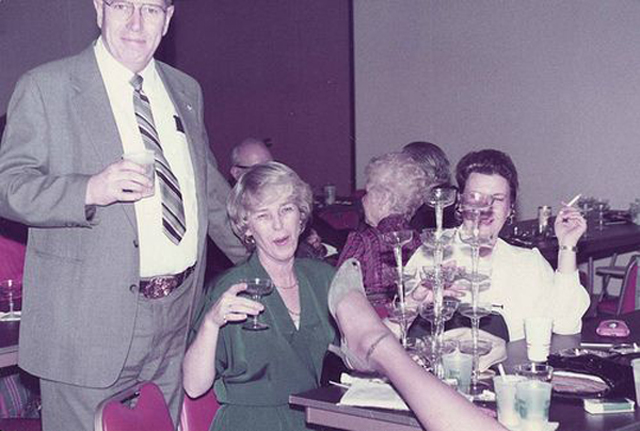
Things have certainly changed.
Year end bonuses began to get phased out in the 1980’s. The year-end bonus used to be equal to at least one months pay. If you were a high-performer it could get much larger. I had co-workers who were getting bonuses equal to a half-years pay.
When it started to end, the bonuses started to decrease in size. First it was equal to one half a month’s salary. Then it became equal to one week’s salary. Then it became equal to a fraction of that. Then, when it was phased out all together, it was replaced by a “door prize” at the Christmas party.
But…
Company parties began to end in the 1990’s, and they began to phase out alcohol from the office during this time as well. Heck, we would always make up cocktails at the office during the final few days before Christmas eve, and if we worked on Christmas Eve, it was period of drunken mistakes and humorous situations.
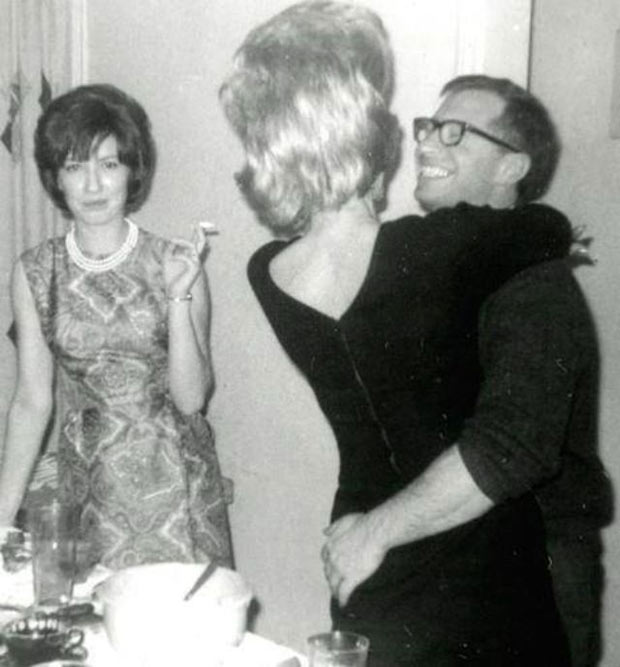
Bringing trays of food to the office seemed to go away after 9-11, and the idea of home-made Christmas cookies seemed to end about that time as well. The idea that HR needed to police the staff so not to violate any work-place rules or corporate standards is a more recent event and can be directly attributed to the Obama Presidency.
Now, I don’t know if he was directly responsible for this or not. I do know that he held various seminars about workplace rules and behaviors. These were directed to corporate HR heads, and other major companies. While I can’t positively point a finger at him personally, there is some strong evidence in support of this perception.
"When updating handbooks, don’t include separate baby-bonding rules for mothers and fathers, Kochman said. While employers can include differing standards for mothers regarding the physical limitations imposed by pregnancy, they should use genderless terms such as “primary caretaker” in their parental leave policies." -Society for Human Resource Management
I don’t know what is celebrated in American companies during December today. I can imagine that the department Christmas tree was thrown away years ago. I can also imagine that the funding for any kind of special Christmas event has been severely curtailed, and I would imagine that alcohol is pretty much banned.
Here are some good links;
- Merry Un-Christmas: Untraditional Ways to Celebrate the Holidays at Work
- Should HR Rename, Reallocate Holiday Time Off to Be More Inclusive?
- Employee Did Not Have a Reasonable Expectation for a Christmas Bonus Despite Past Bonuses, Court Rules
- Back Away from the Mistletoe: Holiday Parties Get Post-Weinstein Makeover
- Fa La La La Blah: When Employees Find Workplace Holiday Parties Boring, Obligatory
- Office Christmas Party’ Is HR’s Worst Nightmare
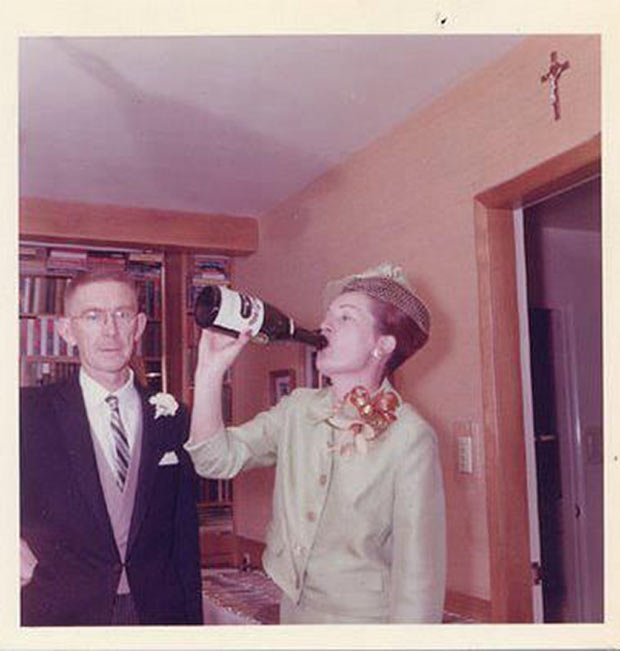
Of course, people would drink a little too much. But, so what? There is nothing as humbling as coming to work the next day or two suffering from a hangover and being the target of an office scandal. AH! Good times, good times. Let me tell you!
There are those who like everything to be sterile and bland. It’s the same kind of mentality that changed the colorful atmosphere in T.G.I.F. into a bland sterile airport lounge. These individuals think that it is great that everything looks clean, crisp and similar. They like the blandness. They relish in the predictable. Their idea of excitement is a potato. Their idea of a good time is standing at a urinal. Their idea of a great date is sitting in a dentist waiting room.
Here, read how the changes are promoted as a wonderful and great thing…
"The biggest changes, and where the restaurants will benefit the most, are from refreshed interiors that make the dining experience feel less like being in the worst episode of Antiques Roadshow and in a place where you don’t mind sitting down and enjoying pieces of meat smothered in Jack Daniel’s sauces along with oversized alcoholic drinks." -Thank Goodness it's Getting Better
How dare we think that we are better because we have eliminated Christmas and it’s celebration from our lives. I contend that making everything bland and sanitizing everything that we are omitting a key aspect of our lives that colors our motivations and enhances our appreciations.
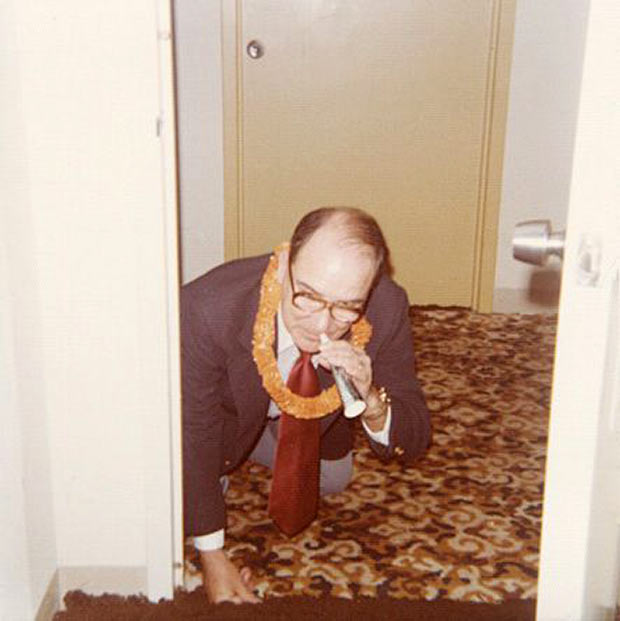
Today we have computers, email, voice mail and all sorts of electronic tools to better complete our work. We work within a nice corporate office environment that allows us to function as a perfect little robot; a nice perfectly tuned clog in the great machine that pays us money for our devotion to the corporate machine.
Are we better or worse off? Personally, I really do think that we are actually worse off.
Mail Room
One of the fixtures of the “old” corporate environment was the “mail boy”. Indeed, working in the mail-room was a fundamental first step when you started work in a company. Here, you learned where everyone worked and what their role was. Your job was simple. You sorted and delivered the mail to the staff.
Of course this was before email, so of course, those twenty emails that you would get in your inbox used to be letters and memos a few decades ago. Which was, of course, why we had an “inbox” and an “outbox” on the desks.
To be fair, many companies still employ an internal office mail room and a staff that moves things around the various buildings and facilities on campus. However, it is truly a pale reflection of what it once was.
Dress Code
Dress codes have changed substantially over the years. I would guess that it would depend on what industry you were in, and where you lived. Some companies provide uniforms for their employees, but for the most part, us “white collar” employees had to purchase our own work clothes according to the dictates of the HR manual where we worked.
Yeah. Have the lowly workers buy and pay for their uniforms. Just, don’t refer to it as a “uniform”. Call it something else, like a “dress code”, and offer “guidelines”. Yeah. You don’t want the serfs (oh, excuse me, “professional workers”) to figure out their true and real spot upon the stratified workplace environment.
California
When I lived out West, in California, the general dress code for engineers and other office workers was along the lines of short-sleeved polo shirts and a nice pair of slacks. Blue jeans or denim was forbidden. Thus the meteoric rise of tan colored cotton slacks.
You know, things might be different in California today.
When I lived there, we had “Fred R-Rated” selling all kinds of electronics at ridiculously low, low prices on television. We had some little old grandmothers driving around wondering “where’s the beef?” And, we had this (new and improved) “New Coke”. Oh my goodness! No, that was a mistake of the grandest scale. Here, an ambitious MBA manager decided to toss out the old coke formula as soon as the owner of the company died.
So what I have to say is just a little dated by two or three decades at least. Heh, heh.
Many workers wore short-sleeved shirts with their ties. They always seemed to be white or an off-white color. Polyester and nylon were pretty popular. The big scandal at the time was wearing some other pattern other than stripes on their ties. Let me tell you, no one ever really stepped out of line wearing something “off the wall” like a dark blue shirt or (heaven forbid) a black shirt with a white tie.
Ugh! One can only imagine the scandal!
Chicago
The Mid-west region near Chicago maintained white long sleeve shirts and ties for decades. Your status and rank were embodied on the type of tie that you wore. Only the managers could wear yellow ties. Most office staff would wear a red tie, with some creative individuals wearing off-color or odd colored ties.
The Mid-West was always considered to be Conservative. The area was settled by Conservative European immigrants and their values and ideas about things were handed down generation by generation to their children. As a result, the Chicago you see today is a direct extension of the results from this kind of long-running conservative traditions. And, Yes, it has resulted in a highly corrupt liberal city.
Anyways, for the most part, the corporate dress code in the Mid-West is quite standardized.
The Deep South
In the deep (deep) south, professionals wore long white shirts and ties as well. However, it was a completely different situation. There, professionals were treated special, and if you walked into a “Jiffy Lube” or a Post Office wearing a “corporate uniform, you were given VIP treatment and you would be pulled out of the line and handled directly.
There, the long-sleeved white shirt and tie was a sign that you were a member of the “professional class”. You, of course, were treated special. You had an education. You had authority. You possessed money and skill. Up North, everyone was equal. But, in the South the culture is stratified.
Your attire is a symbol of your social status.
The North East
In the North East, things were slightly different. Boston and the surrounding New England area also had more relaxed dress codes. We would wear collared polo shirts and other casual but professional dress. For me, if I was working in one of the labs, I would go and grab my white lab coat and put it over my office attire. Typically I would have my access badge on a chain that went around my neck, so I didn’t need to clip it on the lab coat.
The lab coats always tended to get dirty. The problem for me is that once I washed them the pesky things would shrink! It was terrible. So I would end up buying a replacement. I would also get one or two sizes larger fully expecting them to shrink. Typically lab coats had three pockets. Two huge pockets on the side and one breast pocket. I typically left them empty, but for some reason, I would always pick up my pen and put it in the white pockets…
Which meant that at the bottom of all the pockets in the lab coat had black and blue ink stains at the bottom. (That, and the perpetually present little balls of lint and odd debris, such as broken bits of pencil lead, metal shavings, and a spare resistor or two.)
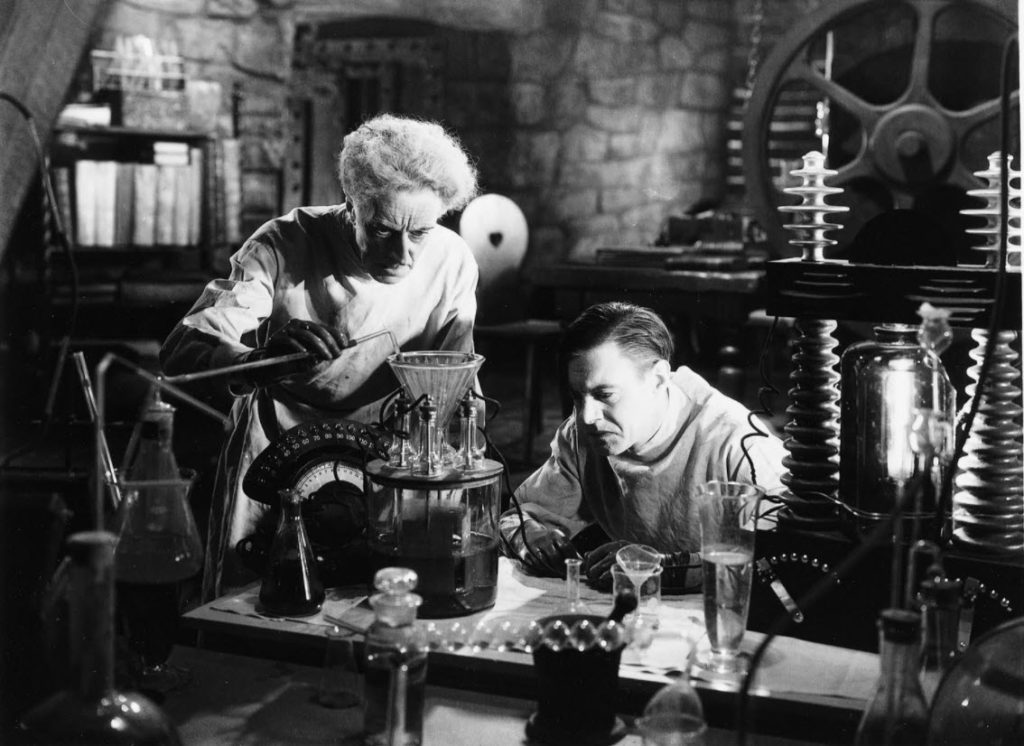
I always kept a spare set of safety glasses in my pockets. Ha! I inherited a set of safety glasses from my father. It was a very old style that looked like it came from the 1950’s. It had that horn-rimmed look. So when I would accidentally leave those glasses lying down on a workbench, desk or piece of machinery, I would always find them right back on my desk in my office. Like magic! Ha! I couldn’t ever seem to get rid of them.
Nobody wanted those things!
China
Anyways, here in China, the dress code is very casual. The southern end of China is very hot and humid all year round. So typically you can wear very comfortable loose clothing. Tee-shirts are normal. Now the dress would vary by your role. As a Laoban (Boss) you would need to wear expensive “high end” tee shirts such as Armani or Louis Vuitton.
Typically, when you go on a business trip within China there are dress rules and behaviors that you should pay attention to. Thus, if you are performing some type of high-end business negotiation over some baijiu (53% grain alcohol), and smoking “555” brand cigarettes, you will carry a “man’s purse” with the cigarettes placed on top on the table. The cigarettes will be the most expensive cigarettes you can buy. You don’t need a lighter, as everyone will offer you cigarettes and light them for you. If you do need to light them yourself, you need a full-on “BOSS lighter”. This is a very manly and authoritative lighter.
Typically, the factory will have a girl assigned to you to take care of you and your needs. She pretty much will help you with the chopsticks (if you are having trouble), and keep your glass filled with your beverage of choice. Typically you might wear a wooden bead bracelet (very popular here in China) along with a Giorgio Armani watch.
If you are going to a factory, heck, jeans are perfectly acceptable. And, of course, all men are judged by the shoes you wear.
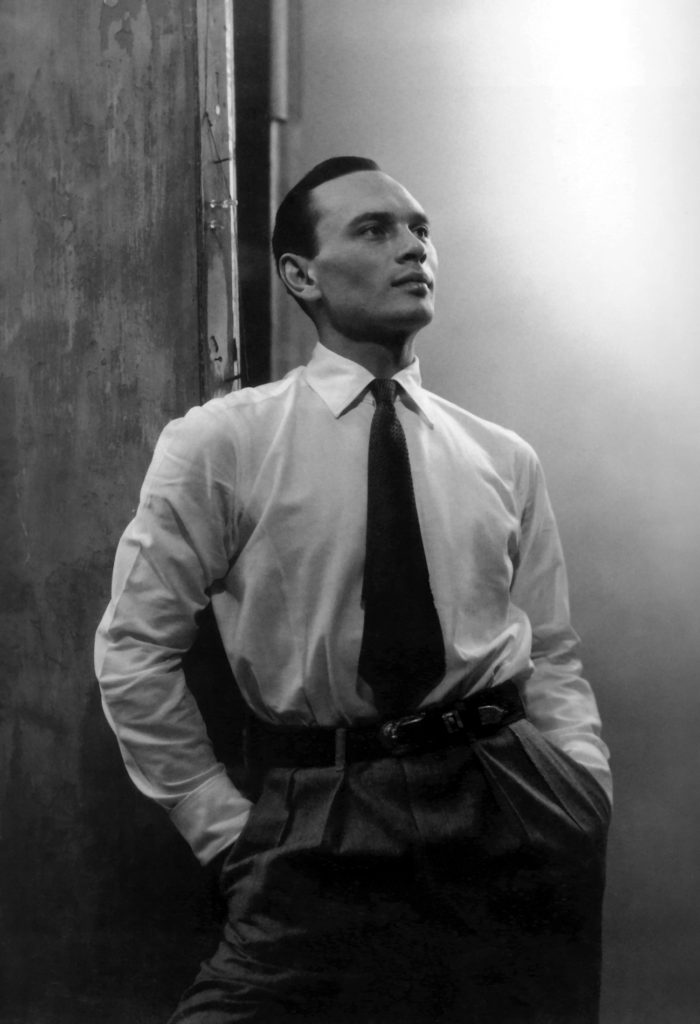
Donuts
In the United States, from time to time, someone would buy a box of donuts for everyone to share. I always liked this ritual. You really don’t see it in China. As everyone just gets some Congee or a Baozi and smunches on it at their desk.
If there is a good thing about corporate life in the United States, it is the donuts!
Cubicles
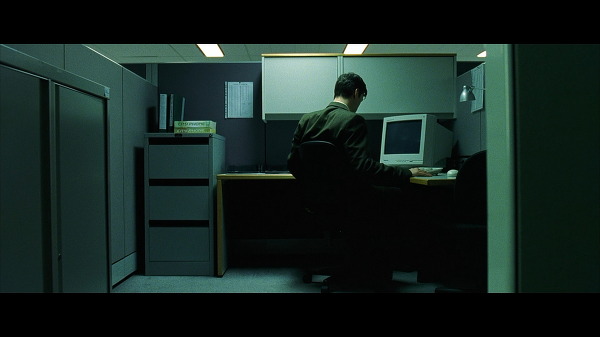
The work environment during the 1960’s and the 1970’s was quite different. Cubicles didn’t start to become popular until the 1980’s. Up until they began to dominate corporate life, people worked either in “the pits” or they had their own offices (with a privacy door).
Today, the cubicle working environment of sterile blues and grays is the norm. There is a movement towards a “open work environment” were everyone sits at long cafeteria style tables and works at a bare work environment free of distraction and color. I guess people like it. You have eliminated all private space. Now people work in the open where they are the perfect drone.
Open Plan
Today, there is a great “buzz” about swapping out the “cubicle farms” for an open office plan. This is not a new idea. Indeed, many offices had an “open plan” layout during the 1960’s and the 1970’s. Essentially, the office would be one big room with desks laid out like a High School room. The manager of the department would sit at the head of the room and would observe every worker to make sure that they kept in line and didn’t stray far from the business objectives.
When I first worked at Edgewater Steel company back in the early 1980’s, both the Finance and the Sales and Marketing departments were laid out this way.
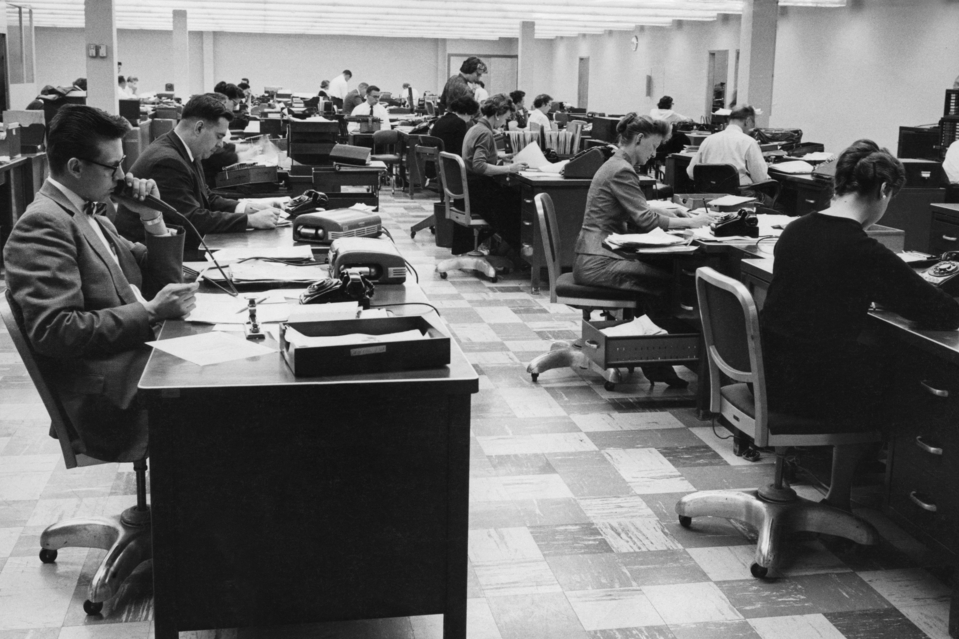
The “Pits”
When I first started working we worked in the “pits”. I basically consisted of a big room with rows and rows of desks. Next to each desk was a drafting board. It was, in a way, similar to the “open workspace” concept that is gaining popularity today.
Here, everyone had a desk with lockable drawers and their own personal file cabinet. They had their own lamp, drafting board, and storage area. In today’s “open office” layout all these elements of personality and personal space are missing. Drones and robots don’t need it, the argument goes.
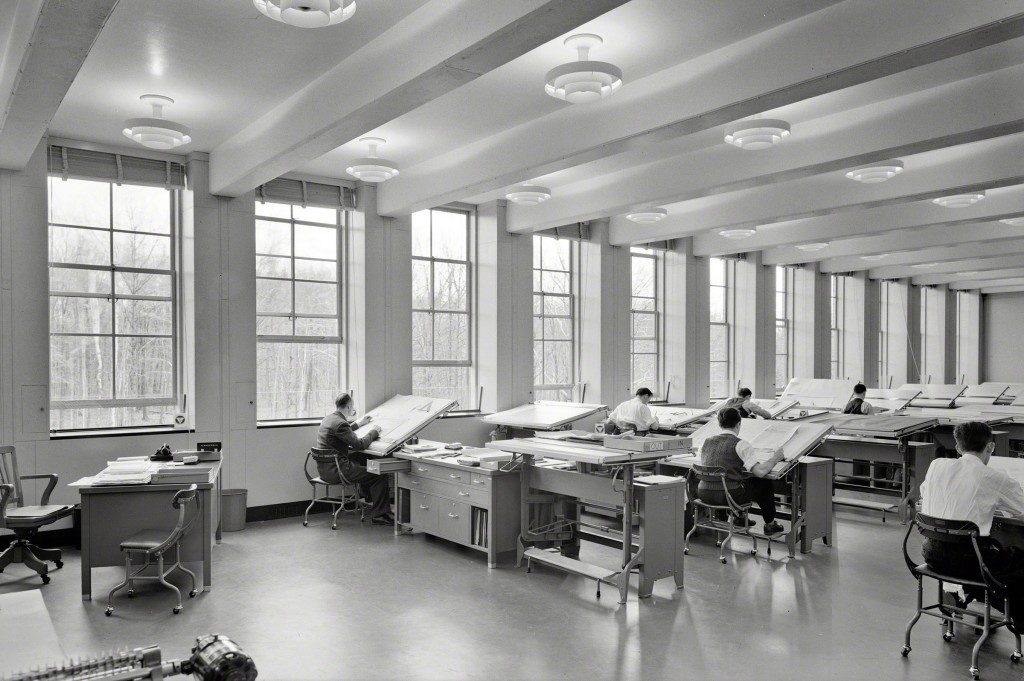
Office Romances
Then as now, there are office romances. Of course, back then, it was frowned upon but NOT prohibited. Today there are all kinds of rules and behavior standards that one must obey. They are all tied one way to the other to state or federal law. So the HR group tends to take a firm policy stance on these issues.
Ah, the good old days…
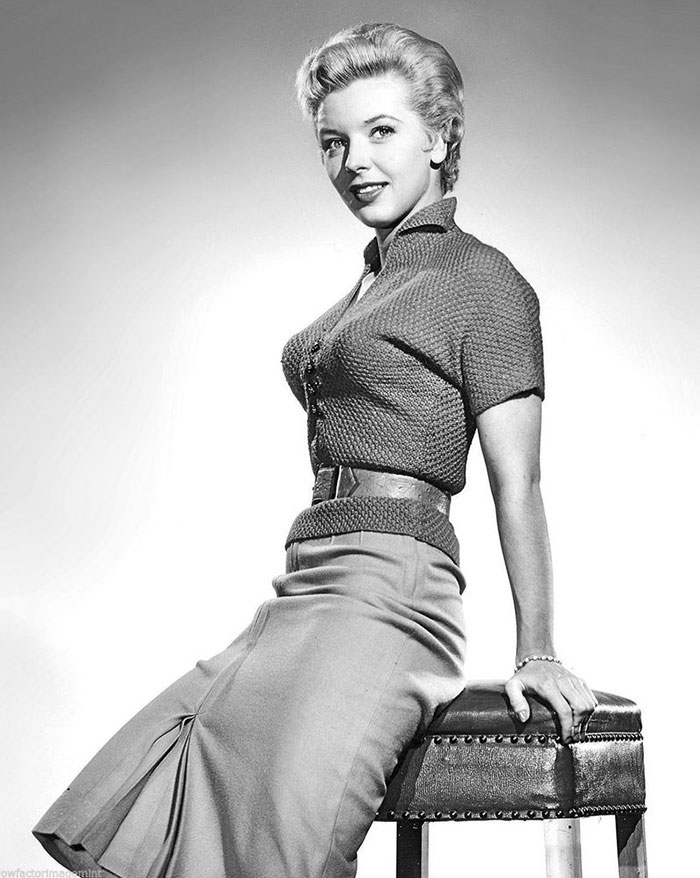
Supervisory and Management Offices
Now, once you worked down in the pits or in the general office, and got promoted, you could move up to your own office. It was certainly considered a perk of your hard earned work. With the position came pay increases, improved and expanded bonuses, and an “entertainment budget”.
Offices, at least during the 1960’s and the 1970’s had the following defining characteristics;
- A private wall that tended to be sound proof.
- A private door that usually had a lock and key.
- A transom above the door to let fresh air circulate.
- The room had it’s own air conditioner.
- A window to view the outside with.
- A large desk with an “executive” chair.
- A potted plant.
- A painting on the wall.
- Wall decorations, such as paneling or an Interior Designed layout.
- Carpeting.
- A sofa and one or two soft chairs with armrests.
- A coffee table.
Depending on the company and your role and rank, you could also have the other amenities;
- Stand-alone smoker’s ash tray.
- Credenza with bar.
- Sink.
- Refrigerator.
In the coal mines, the supervisory offices tended to be rather spartan. While they tended to have the basic necessities, they all tended to be dusty and dirty with age and use. The same is true in any of the dirtier industries. The more removed from the factory floor, the cleaner the offices were.
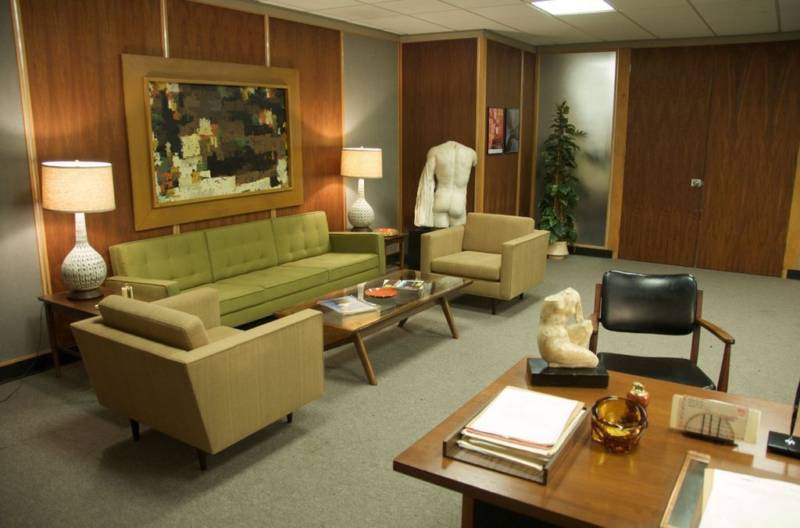
Most of these older style offices were discarded and replaced with cubicle farms by the 1990’s. However, I do remember being stunned to walk into one or two a few times when I went on business trips to Milwaukee. It gave the impression of a dying world; a world of the past that was still hanging on to previous glories.
Never the less, I personally thought the offices were AWESOME!
There was always a lot of coarse jokes about the use of the sofa in the Manager’s offices, but there really wasn’t any proof to back it up. Yet, at every company, there was always a sort of “gold digger” office chick who would flirt with the management. I can’t help but imagine the kinds of interesting situations that those chicks would get themselves into.
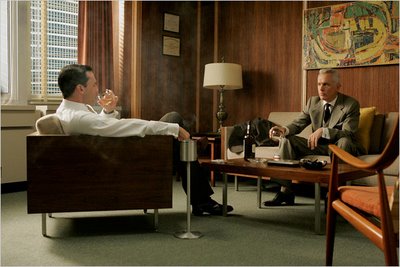
The Three Martini Lunch
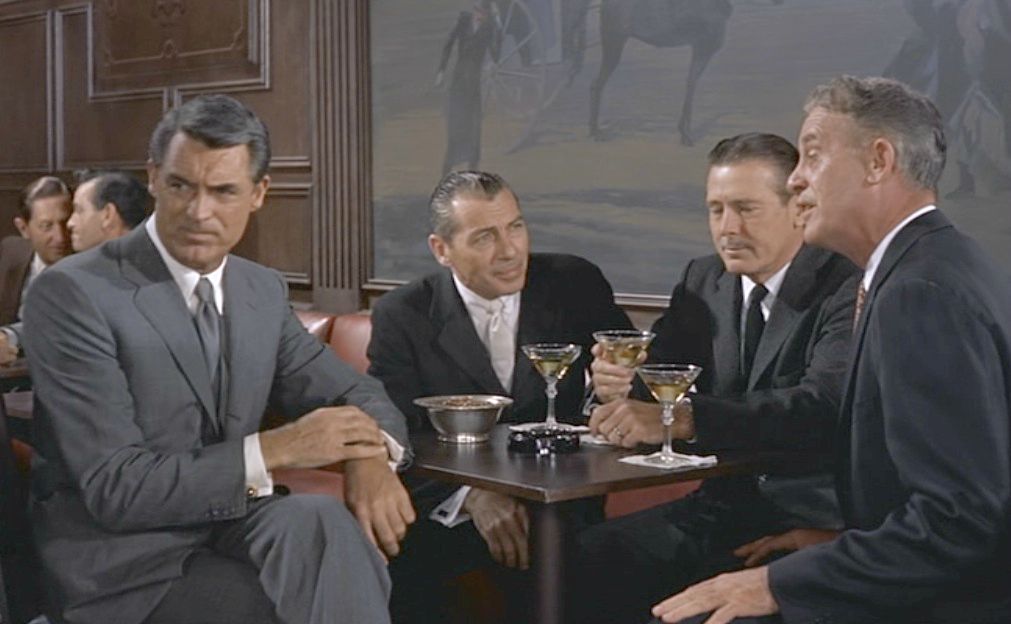
I suppose that some explanations are in order. For there are many things that I grew up that were normal, that is considered outrageous today. One of them is the three-martini lunch. The three-martini lunch is a term used in the United States to describe a “leisurely, indulgent lunch enjoyed by business people”. Back in the day, this was a common enough practice. If you were in management, part of a sales team, or even a supervisor, these kinds of lunches were quite common. Indeed, many times, the boss would come back after 3:30 pm from a long lunch and be quite “sauced”.
Now, according to Wikipedia, it is ONLY a perception.
“It refers to a common belief that many people in such professions have enough leisure time and wherewithal to consume more than one martini during the work day.”
Ah. Nope, my dear clueless millennial. It was not a perception. It was a reality. Drinking at work was commonplace. At least in the steel, coal, and appliance industries, it was. I don’t know about the other industries.
Now, since business matters are usually discussed at them, three-martini lunches can be considered a business expense. Of course (which includes travel, meals, etc.) and thus can qualify for a tax deduction. The people involved would remember to collect their receipts and turn them in at the end of the month for reimbursement. They would get money back, and the receipts were kept in a ledger to account for all the costs related to business expenses.
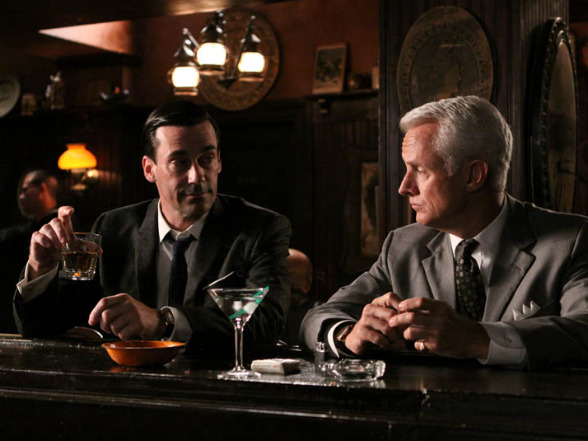
In those days, all managers, and of course sales staff, had an entertainment budget. The manager would have free latitude in the determination of how to spend the money, and it was often considered a perk. The manager could spend it with employees to offer them incentives and to build up the working relationships, or use it for work-related tasks with other companies and people.
Wikipedia does have it right in that the three-martini lunch is no longer common in the United States. However, it is, thankfully, quite common outside of it. Yeah! Baby!
“The three-martini lunch is no longer common practice for several reasons, including the implementation of "fitness for duty" programs by numerous companies, the decreased tolerance of alcohol use (Hum… speak for yourself), a general decrease in available leisure time for business executives, an increase in the size of the martini, and a decrease in the size of the tax deduction.”
America for the modern businessman certainly blows!
President John F. Kennedy (D) called for a crackdown on such tax breaks in 1961, but nothing was done at the time.
Then another Democrat, Jimmy Carter (D) condemned the practice during the 1976 presidential campaign. Carter portrayed it as part of the unfairness in the nation’s tax laws, claiming that the working class was subsidizing the “$50 martini lunch”. (Of course, use the “class struggle” to divide Americans. It’s a time-honored Democrat tactic. The theory is because a “rich businessman” could write off this type of lunch as a business expense.)
By the time Bill Clinton (D) came to office, there wasn’t much that still needed to be done. So he concentrated in the elimination of all vices from the work environment (except for elected officials, of course) and the banning of cigarettes, and drinking proceeded apace.
Not to be outdone, Barrack Obama (D) started to tie health plans to tax breaks. In one fell swoop, he connected all of the industry, the medical industry, the insurance industry together, weaponized them as tools of the Federal government. Then he made the collection of personal medical information (formerly private and privileged information protected under the 4th amendment) a mandate of the dreaded IRS.
The only people who still had three-martini lunches were the “fat cats” in Washington, D.C. Today, I don’t think any company still has the three-martini lunches or even a single beer at lunch. Heck, after the Obama-era workplace rules, drinking a beer during lunch might actually end up getting you fired.
Commercial Break
Now, let’s take a break from this narrative to enjoy a little bit of advertising from my generation.
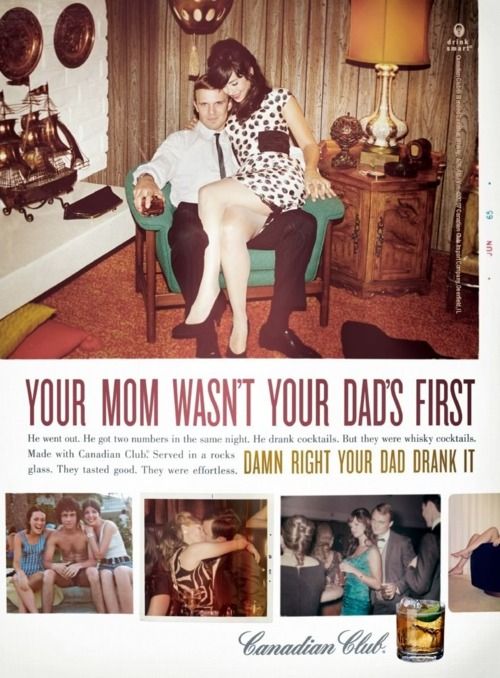
Drug Screening
The major federal law governing the use of drugs and alcohol in the workplace is the Drug-Free Workplace Act of 1988. This Act basically states that any employer who receives federal grants or contracts must be drug-free, or it risks losing the federal funding. The Act does not, however, contain any provisions that specifically allow for workplace drug testing. In addition to the federal Drug-Free Workplace Act, other federal laws also touch upon and concern drug use in the workplace, such the Americans with Disabilities Act (which classifies alcoholism as a protected disability) and the Family and Medical Leave Act. Specific federal agencies or departments may also have drug-testing policies in place. For example, the Department of Transportation has regulations that require drug testing of more than 8 million different employees, such as truck drivers. -FindLAW
Drug screening was a big thing in the day. As I recall, it was an initiative by Bill Clinton (D). The idea, or so they said, was to curtail drug abuse at the workplace. None of us, at the time, thought it was a big thing. However, that wasn’t the case according to the big newspapers of the day. It was an epidemic that needed to be squashed. Their solution?
Deny work employment to anyone doing illegal drugs.
Apparently some big Washington “think tank” or “Blue Ribbon Panel” came up with the idea to pre-screen everyone before they obtained work. You wanna bet that these same people had some strong political connections to the sponsors of this ruling? Ah, “Blue Ribbon Panel”, oh yah we know your pedigree.
Of course, it does not apply to unemployed people trying to get welfare benefits, government employees or elected officials. They are the special protected class. It only applies to the serf-class; the working “stiff” who must work for someone else in order to support their family.
So today we now have the rules that make you have to pee in a cup before you start work, and suffer periodic unannounced random drug screenings. Hey dudes! What about the fourth amendment in the “Bill of Rights”, oh yeah…
The Supreme Court found that it was unconstitutional.
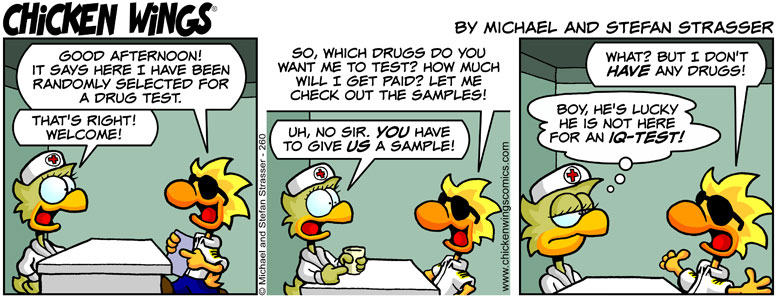
However, the reason why you HAVE to have a drug screening before you work at a company is now quite clear. It is because they will refuse to hire you unless you waive your American protections under the Bill of Rights. You need to voluntarily waive your rights to get a job. Yeah! Free country my fucking ass!
Yes, so that is correct. What a great “end run” around the protections offered by the Bill of Rights!
Each state has its own body of laws governing workplace drug testing or monitoring. For example, Alaska has no mandatory drug-testing laws, but does have voluntary drug-testing laws that employers must follow if they choose to conduct drug testing of job applicants or employees. In many states, employers have the legal right to test job applicants for drugs or alcohol, provided that the applicants know that the testing is part of the interview process for all employees. In most cases, the testing cannot be conducted until the applicant has been offered a position. -FindLAW
In America today, you have to sign a paper that says you voluntarily wave your rights GUARANTEED under the Bill of Rights. You do this so you can work. Hey, is it just me, or doesn’t this sound very, very, VERY wrong?
It’s the same sort of thing as the “designated free speech areas” used to circumvent the First Amendment Protections. Oh sure, you can speak your mind. You just cannot do it anywhere where people can see or hear you. Kind of defeats the purpose of the Bill of Rights. Doesn’t it?
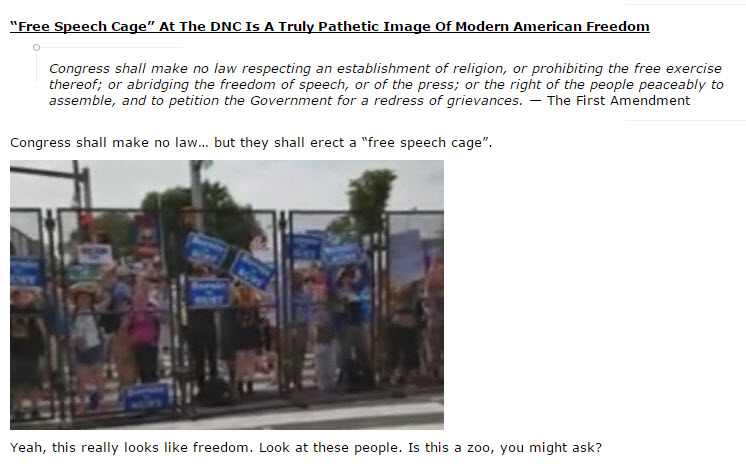
Medical Insurance
Today, it is a given that if you work over 40 hours a week in the United States, that you would be offered an employment package that would include a medical plan. As such we tend to think that things have always been this way. While we discuss the premiums and deductibles involved, we have forgotten the history of getting medical attention as part of our employment package.
OK, so here is the forgotten history…
- Up into the early 1970’s. Companies provided access to a free doctor at the factory. Employees were permitted to bring their families in for treatment as needed. Yup, this was exactly the way things were during the “Peace and Anti-War movements” during the 1960’s.
- Mid 1970’s. Democrat Senator Ted Kennedy (D) decides to “improve” American health care by implementing HMO’s. Based on his speeches you would think that the world was falling apart and things needed to happen, and quickly! Funny for a fellow that never worked for a company in his life, to feel this way. Odd thing, I’d say.
- Early 1980’s. The company doctor was replaced by a nurse, and family visits were discouraged. Maybe he was right. I don’t know, but there were certainly some changes going on in terms of the way that companies handled the health of their employees.
- Early 1990’s. The employee was provided with a free health plan. There were no deductibles, no co-pays. The company picked up the entire bill. Let me repeat; the company paid for EVERYTHING, including all prescriptions. The employee never had to pay anything.
- Around 1993 to 1997. Democrat Senator Ted Kennedy (D) continuously pushed the idea of HMO’s, in order to “control” the “outrageous” medical costs. By the late 1990’s under President Bill Clinton (D), new changes in the law greatly expanded the HMO program reach. Most companies started to implement HMO’s for their employees. Read about the changes HERE and HERE.
- Late 1990’s. Shortly afterward, companies began to have employees pay a fraction of the cost for company sponsored medical care.
- Middle 2000’s. Co-pays on medical insurance were implemented and became a permanent fixture in the industry. Generic medications started to be provided as a low-cost option to medicines.
- Late 2000’s. Deductibles and co-pays were spiraling out of control. President Barrack Obama (D) implements ACA ObamaCARE. People are permitted to opt out of it, but they have to pay a terrible fee for doing so and have to report their medical history to the dreaded IRS, the most feared agency in the United States.

The argument behind all this is that, “Hey! If you don’t want the health care, then don’t take the job.” Whatever, it is just the way things are.
Now nothing is black and white. There are no clear cut-off dates when doctors were replaced by HMO’s and when rates started to spiral out of control. It varied from region to region and from industry to industry. This is just a rough summary based on my often faulty memory. In my case, it is all true. When I first started working, I had free healthcare by my company doctor.
I don’t think that anyone in the United States has this experience today.
Corporate Roles
Just a handful of decades ago there was a real stratification of positions and titles at work. As you climbed up the “corporate Ladder”, you would be awarded with substantial pay increases and a collection of perks that ranged from your very own potted plant, to complete company-paid vacations. This included such things as where you got to park your car, and how you entered the office.
Today, there just isn’t much thought given to the entrance locations for the company employees. In fact, it’s almost considered a joke.
When I worked at Poulan-Weedeater, they had a line (on both sides of the walkway leading into the offices) of chainsaws being tested. You had to walk through the gauntlet of noisy running chainsaws (behind a chain-link fence) before you can enter the building. It was a horrific and noisy way to start work.
However, back in the 1960’s and 1970’s, there was actually some thought devoted to how the employees would enter the work environment. Typically there was a separate parking area with a secluded (and often shady) tree-lined path to the employee entrance. There would be a security guard there who would say “hi” to you.
In the past there were two kinds of employees;
- Hourly
- Salaried
The hourly employees were paid by the hour. Their job was work. They exchanged their time for money. The salaried employees, on the other hand, were paid monthly regardless of the time that they spent in the office. They worked at a career. As a result of this greater devotion to the company, salaried employees would get “perks” and a far greater degree of leeway in their hours, actions and work environment.
In those days, there was a distinction between salaried workers and hourly workers. The salaried workers would have their own parking spaces, they would have their own “smoking lounge” which would have a television, and other amenities that the rank and file workers would not have. They would also have the “golden key” to the executive bathroom.
Today, this is unheard of.
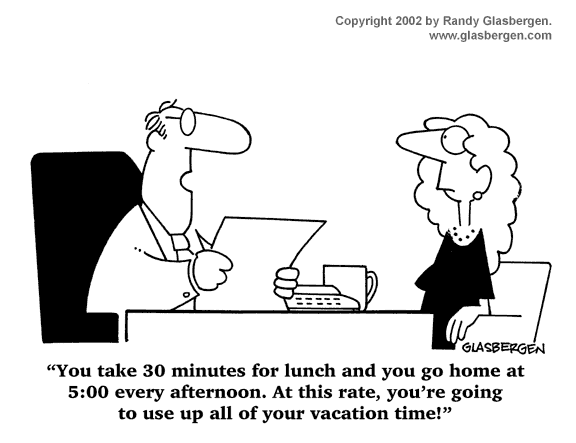
I am sad to say that today, salaried workers are treated identically (in the United States) as hourly workers are. There are no discernible differences. Both are drones working in a corporate environment with the only difference being their job titles and pay scales.
With the hollowing out of the middle class in the United States, where the rich got richer and the poor got poorer, came an identical trend in corporate America. The associated perks of education, experience, and advancement have all but dissipated. Now, what is left is a corporate aristocracy. They rule from above and the rest of us occupy roles as drone serfs, living paycheck to paycheck, with no exit-ramp from the treadmill.
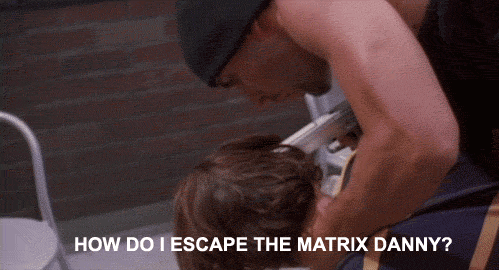
Wellness Programs
Ah, that sounds so “nice”. A “Well-ness” program. Why it sounds like the government really cares, and companies really care about how us “working stiffs” live.
We are strongly “advised” to “participate” in a wellness program…
I am reminded how the Nazi Germans convinced all those millions of Jewish Germans into the cattle cars. They told them that it was a "relocation" program where they would be sent to special communities where they could be "protected" from those who would hurt them.
The government is really good at providing misleading names to programs to garner approval for otherwise bad and shitty initiatives. How about the absolutely misnamed “Net neutrality” effort, or the “Healthy Hunger-Free Kids Act” which ended up practically starving millions of school children.

Often it uses the “carrot and stick” approach to get workers to participate.
Hey, maybe I am missing something, but…
But, don’t you think that you are giving enough at work? After all, you devote at least 40 hours a week, plus commute time to your company. You wear their pre-approved clothing uniforms. You sit where they tell you, you do what they say. You pay money to further your education for THEIR benefit. Often times, you interrupt your time with your families to deal with work-related issues and problems.
You stand there an take it while a superior or manager berates you. You stand there and take the fucking awful 360-degree performance review. (Only a pure evil, sadistic person would come up with such a horrible and degrading event.)
Now they want you to change what you eat, how you conduct yourself outside of work, and your personal interests.
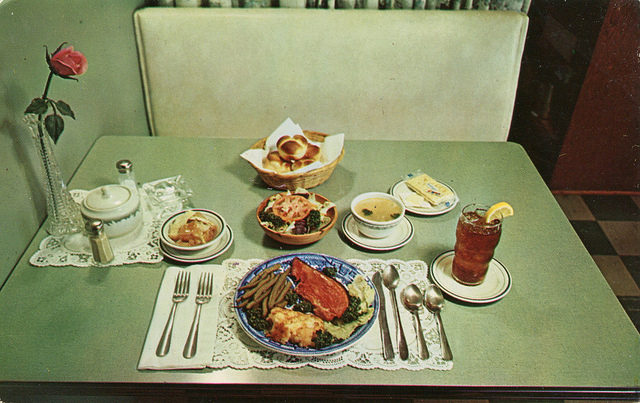
Don’t you think that this kind of request is way overboard? Don’t you think that it is an imposition on who you are as a person, and an imposition on your family as well? I do.
I really do.
Blood Drives
I remember when I worked at one of the divisions of General Motors. They had this yearly “blood drive” for the local blood bank. I think that it was a good thing to help the local blood bank. However, I also think that it was a very terrible thing to force all the workers to give blood or risk losing their job.
That was the rule, though. You had to participate and show evidence to your superior. He would then log it in and add a notation into your personnel file. your participation would be weighed against other factors as part of your yearly review. Failure to participate might result in no pay increases and possible termination.
Yep, strange as it might sound, many American companies expect you to spill blood for them. I guess it is actually a distraction from upper level incompetence.
Vacation Days
Americans get very little in the way of holidays of vacations days. At most, in all the companies that I worked, I would be offered from one to up to two weeks paid vacation per year. Of course, the manual clearly stated that you would get an additional week for every five additional years of service… Ha! How many people work at the same company for fifteen or more years?
Heck, at those multi-billion dollar software companies, an “old timer” is someone who is lucky to last two years.
All of this is quite interesting, but let’s stick to the issue at hand; which is the vacation time that Americans get compared to their counterparts elsewhere in the world. You know, the first time that I encountered this situation (where I was comparing myself to my peers) was when I started working with Brazilian, and Australian engineers. I was astounded that while I had been working at my company for four years, and I was lucky to have one-week vacation, my counterpart in Australia (who had only been working for one year at his company) got four weeks off. Another team member was off and away on a two-month vacation, and he was at the company for maybe ten years. It didn’t seem fair.
And it wasn’t.
No problem. It was one of those things that you don’t bother fighting against. I mentioned it to HR. I reflected on it with my superiors. Later, when I had the means and some planning, I just left the United States and went elsewhere to companies that took better care of their employees.
Some links;
- Why is America the ‘no-vacation nation’?
- How do Americans cope with 10 vacation days compared to many Europeans?
- Why do Americans tolerate being so overworked?
- The Vacation Gap Between the U.S. and Europe
- Americans have less vacation time than workers in any other advanced economy.
- Americans get the least paid vacation time.
- Why do Americans get so little vacation time?
- Are you taking enough vacation?
Joe Banks: You look terrible, Mr. Waturi. You look like a bag of shit stuffed in a cheap suit. Not that anyone could look good under these zombie lights. I, I, I, I can feel them sucking the juice out of my eyeball. Suck, suck, suck, SUCK... [makes a sucking noise] Joe Banks: For 300 bucks a week, that's the news. For 300 bucks a week, I've lived in this sink, this used rubber. Mr. Waturi: You watch it, mister! There's a woman here! Joe Banks: [shouting] Don't you think I know that, Frank? Don't you think I am aware there is a woman here? I can smell her, like, like a flower. I can taste her, like sugar on my tongue. When I'm 20 feet away I can hear the fabric of her dress when she moves in her chair! Joe Banks: And why, I ask myself, why have I put up with you? I can't imagine, but now I know. Fear. Yellow freakin' fear. I've been too chicken shit afraid to live my life so I sold it to you for three hundred freakin' dollars a week!
Credit and Criminal Reports
Americans have no privacy. Over two hundred years algo, the framers of the United States Constitution thought that they would protect the privacy of Americans by the 4th Amendment. They believed, wrongly, that those who would be elected to office would [1] obey the Constitution, and [2] enforce the Bill of Rights. They were wrong.
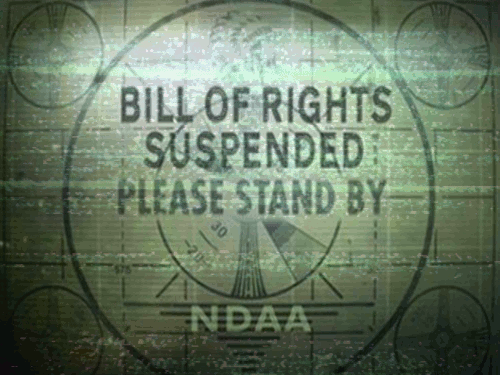
Today, you cannot obtain work in the United States unless you are investigated. This investigation comes in many forms. From credit reports to criminal reports, to reports on your social media usage and presence.
We are (perhaps) slightly irked by this. Heck, in today’s society we are just happy to get a job or the potential promise of one. We put up with this situation because many of us have not been denied employment because of a report. So we think that it is not a big or major problem. We assume that it will never be a problem.
But, you know what,? As you get older, as you travel around more, as you experience life more, as you meet more people and have more opportunities… you will experience things that others won’t understand. Those experiences can, and you know that they WILL, be used against you.
Which is why privacy is so fucking damn important.
At least the EU, and China takes privacy seriously. Thank God!
- Google Glass: Expect widespread usage bans over privacy
- Germany Orders Facebook to stop collecting Data
- Facebook’s privacy policy breaches European law
- Is it lucky that China banned Facebook
- Why Google Quit China
- Facebook Policies Taken to Task
Summary and Some Thoughts
As time moves on, I am getting more and more convinced that I am just an old grizzly fossil. My experiences, my belief structures, and my attitude really seemingly has no place in modern American society. The way I look at American culture, and business today is through the eyes of a jaded old man. I just don’t fit in.
It’s truly sad.
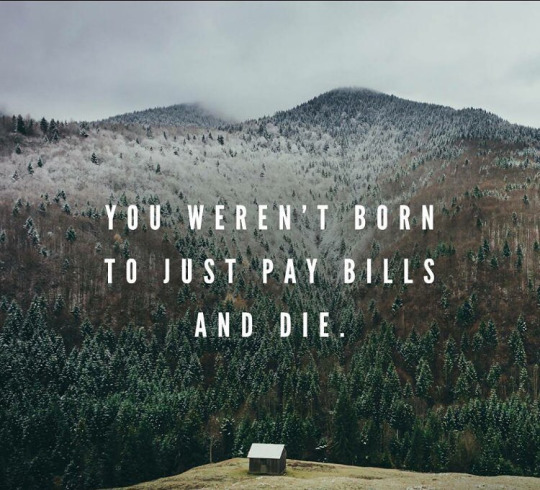
Thankfully for the good of everyone, I am well removed from the realities of Corporate American life. I live in Asia where the culture is more…” traditional” and where I am able to “fit in” better. I am comfortable here, and maybe that is a good thing.
Lately, I have been reading how the huge corporate coffee exchange; (“Starbucks” for those of you who don’t know what I am referring to), is letting unemployed homeless hang out inside the restaurant, use the WiFi and the bathrooms. As someone who also was once homeless (heck, more than once) I do appreciate their symbolic gesture. But, you know what, there are “perpetual homeless”, and then there are “apparently homeless” folk.
Maybe it might have been a better gesture to offer them some free coffee for an hour’s worth of work. Maybe.
I don’t know… I’m not in that position. There are no easy answers. I do recall trying to use the Corpus Christi public library when it was overrun with homeless folk. It became a cesspool, and I needed to accompany my wife when she went to the bathroom so that she wouldn’t get accosted. When you give something to someone freely, they don’t appreciate it. It has no value to them.
Anyways, restaurants are quite different here in Asia. Different is good. Especially when you share the same point of view and culture.

Take Aways
Well, if there is one point that I do want to make, it is DO NOT FOLLOW THE HERD. You are better than that. While there are companies that are good and companies that are bad, you (as an individual) can choose how you can live your life. I suggest you be choosy. Don’t do what everyone else is doing. Question it.
- Work culture has changed substantially over the last few decades.
- The American government has interfered in how companies are run.
- Busybodies typically run the HR groups in large corporations.
- Americans are cheated out of vacation time, compared to the rest of the civilized world.
- Coffee used to be free.
- Workers used to have fun together.
- People used to say Merry Christmas to each other during Christmastime.
- Workers in the Federal Government do not need to do any kind of actual work today. It has been this way ever since John F. Kennedy (D) implemented his EO10988.
- Bad bosses have always existed, but today’s corporate environment allows them to thrive.
- No person, company, government, or policy should dictate how you are to live your life on your personal time.
FAQ
Q: What is a “common sense” dress code?
A: The new CEO of GM (Mary Barra ) startled everyone by replacing the huge and thick stack of rules on how to dress at work with just two words; “dress appropriately“. This caused an absolute tremor in the corporate world. How dare she? Yet it worked, and many other companies are following in her tracks. You need to realize that in many instances, professionals have a brain. They do not need to follow set hard rules carved in stone.
After replacing GM’s 10-page dress code treatise with a two-word appeal, Barra received a scathing email from a senior-level director. “He said, ‘You need to put out a better dress policy, this is not enough.’ So I called him—and of course that shook him a little bit. And I asked him to help me understand why the policy was inept.” The director explained that occasionally, some people on his team had to deal with government officials on short notice, and had to be dressed appropriately for that. “Okay, why don’t you talk to your team,” Barra replied. “He was an established leader at GM, responsible for a pretty important part of the company, with a multimillion-dollar budget. He called me back a few minutes later, saying, ‘I talked to the team, we brainstormed, and we agreed that the four people who occasionally need to meet with government officials will keep a pair of dress pants in their locker. Problem solved.’”
Of course, I think that this is brilliant. But you know, busybodies and easily manipulated millennials can’t find common ground in this. They want hard and fast rules to control everyone and everything. Read this…
While Barra’s intentions are surely to make GM more inclusive, not less, a “dress appropriately” policy might inadvertently open the way for managers to use it against employees of certain genders, races, cultural backgrounds, or other identities. If the only “appropriate” dress code is one that excludes “other” demographic groups, it’s not supporting an inclusive culture. In an ideal world, this wouldn’t happen, but given what we know about diversity and inclusion in corporate America, it is still a good idea for company policies to put checks on this kind of exclusive behavior and make sure employees enjoy the psychological safety to bring their “whole selves” to work.
Q: How did pop culture in the 1970s influence work?
A: It really didn’t. At best there was always a (terribly) photocopied picture of Clint Eastwood holding two pistols with the words “Go Ahead, make one more change” taped to a drafting board or a filing cabinet.
I once had a secretary who had a “pet rock“. Work dress fashions come and go. I did like the mini-skirts and go-go boots. Big hair was pretty cool. The negros would wear “afros“, and the gals would have these enormous “dos”.
I also once had a secretary who had a big umbrella with a big yellow smiley face that said “Have a Good Day.” written on it. You could wear “earth shoes” to work, though I was unaware of any safety-toed boots that were “earth shoe” compliant. I had a co-worker who wore a “mood ring”.
Q: Did the drug culture in the 1960s influence the working environment?
A: I don’t think so. At work and off work, we would tend to drink and engage in the vices of the day such as smoking and chewing gum. Smoking the dreaded “reefer stick” did not become common until the 1970’s and at that, it was kept quiet and hidden. It was never part of your work life.
I know that certain people at China Lake would use “crank”, and others might drop a tab of acid or two, but that was about the extent of it. In the other industries, such as food or construction, there were those who would indulge in other kinds of recreational drugs. However, all in all, it was not really commonplace.
Q: What is the best workplace coffee machine?
A: Pour Over Chemex Coffee Maker. I love the simplicity of it. I love how it requires your attention and I most especially love the great cup of coffee that it makes. For me, I strongly urge the reader to use “Chock Full of Nuts” brand coffee. No, it doesn’t taste like nuts. It just has the most unfortunate name in the world. But, in taste tests with real coffee drinkers, there is absolutely no question that this is THE BEST brand of coffee ever made.
Chock Full O’ Nuts Apparently, this brand is living up to it’s “heavenly” jingle, because it comes very highly rated- scoring a 4.6 out of 5 on Amazon Reviews. It typically costs between $5.19 and $5.79 for a 10.5 ounce can, depending on where you buy it.
However, it has been a while since I was in the States. Reports are that there is new management in the company and that they are apparently replacing the Arabica beans will the less expensive Robusta beans. If this is truly the case, then I will need to look elsewhere for my coffee needs. Reader, listen up, you want 100% Arabica beans for your coffee.
Q: Is it ok to say “Merry Chrismas” at work?
A: Oh my yes. Everyone here in China says “Merry Christmas”, and it’s not even a Christian nation. If you are taken aside by HR and told not to express yourself, report that HR manager to the CEO of the company. They are way beyond their mandate.
Comments on Free Republic
In July 2018, this article was presented on Free Republic for comments. You can read the comments HERE.
Posts Regarding Life and Contentment
Here are some other similar posts on this venue. If you enjoyed this post, you might like these posts as well. These posts tend to discuss growing up in America. Often, I like to compare my life in America with the society within communist China. As there are some really stark differences between the two.







More Posts about Life
I have broken apart some other posts. They can best be classified about ones actions as they contribute to happiness and life. They are a little different, in subtle ways.





Stories that Inspired Me
Here are reprints in full text of stories that inspired me, but that are nearly impossible to find in China. I place them here as sort of a personal library that I can use for inspiration. The reader is welcome to come and enjoy a read or two as well.
Articles & Links
- You can start reading the articles by going HERE.
- You can visit the Index Page HERE to explore by article subject.
- You can also ask the author some questions. You can go HERE to find out how to go about this.
- You can find out more about the author HERE.
- If you have concerns or complaints, you can go HERE.
- If you want to make a donation, you can go HERE.
Notes
- Initial draft 20MAY18 through 27MAY18.
- SEO review and Grammerly check 27MAY18.
- Internet Release 27MAY18.

